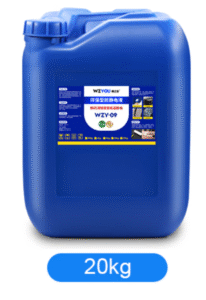Antistatic Sprays
Definition
An Antistatic Sprays is a chemical compound that reduces or eliminates the buildup of static electricity by lowering the surface resistivity or volume resistivity of a material, particularly polymers and plastics.
📘 Terminology
Surface Resistivity (Ω/□): The electrical resistance of the surface of an insulator.
Volume Resistivity (Ω·cm): The resistance to leakage current through the body of an insulating material.
Functions
Charge Dissipation
Antistatic agents facilitate the conduction or dissipation of electrical charges generated through friction, contact, or material separation (a phenomenon known as triboelectric charging).Static Hazard Prevention
By minimizing electrostatic buildup, they prevent issues such as electrostatic discharge (ESD), which can damage sensitive components or even cause fires in flammable environments.Fine Powder Control
During polymerization or processing of powdered materials, antistatic agents reduce static charge accumulation, thereby improving flowability, dispersion, and safety.
Types of Antistatic Spray
Antistatic agents are typically surfactant-based and can be classified into four main categories:
Cationic Types
E.g., ammonium salts, quaternary ammonium salts, alkyl imidazolines.
🧪 Often used in textile and plastic applications where compatibility with negatively charged surfaces is needed.Anionic Types
E.g., alkyl sulfonate sodium, phosphate esters.
🧪 Effective in aqueous systems; used in coatings and detergents.Amphoteric Types
E.g., alkyl dihydroxyethyl ammonium betaines, N-alkyl amino acid salts.
🧪 Exhibit both cationic and anionic behavior depending on pH, suitable for cosmetic, textile, and anti-static packaging uses.Nonionic Types
E.g., Tween surfactants, fatty acid ethylene oxide adducts, alkylphenol ethoxylates.
🧪 Excellent compatibility with polymer matrices; widely used in internal additives for plastics.
Application Methods
External Coating (Topical Application)
Spraying or wiping antistatic agent solutions onto the surface of plastic films, carpets, or textiles to form a conductive layer.Internal Additive (Bulk Addition)
Mixing the antistatic agent directly into the resin formulation during polymer processing. This provides long-term static dissipation, especially in molded parts.
Industry Applications
📦 Packaging
Used in plastic films, trays, and containers to prevent dust attraction and static buildup that can damage sensitive electronics or pharmaceuticals.
👕 Textile Industry
Applied to synthetic fibers (e.g., polyester, nylon) to prevent static cling, improve wearability, and avoid electrostatic shocks in dry environments.
🔧 Electronics Manufacturing
Critical in ESD-safe environments such as EPA zones (Electrostatic Protected Areas) to prevent circuit board failure, chip damage, and signal degradation caused by electrostatic discharge.
💊 Medical Devices and Pharma
Applied to tubing, packaging, and processing equipment to avoid particle attraction and maintain cleanroom standards.
🧪 Industrial Processes
Used in powder handling, petrochemical packaging, and high-speed manufacturing lines to reduce fire or explosion risk caused by static ignition.
Conclusion
Antistatic agents play a critical role in static electricity management across a range of industries. Whether as a surface coating or internal additive, the correct selection and application of antistatic agents can greatly improve product performance, safety, and process reliability.
Need help selecting the right antistatic solution for your application? Contact us today for expert advice.
